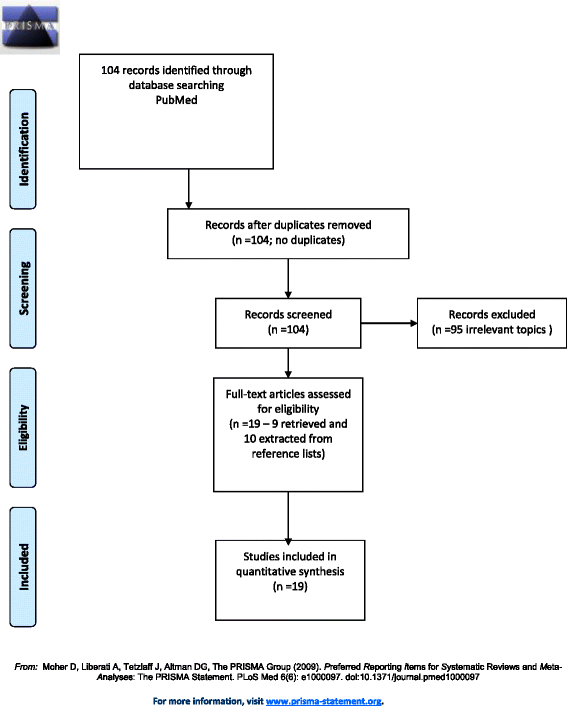Presentation and treatment of uterine leiomyoma in adolescence: a systematic review
- PMID: 25609056
- PMCID: PMC4308853
- DOI: 10.1186/s12905-015-0162-9
Presentation and treatment of uterine leiomyoma in adolescence: a systematic review
Abstract
Background: Uterine leiomyoma is the most common gynecological tumor in the reproductive years. However, it is extremely rare in adolescence (<1%), with few reports found in the literature. The biological behavior of such tumors in this age group is unknown, as well as the best possible treatment for this population. We aimed to analyze all available reports of uterine leiomyoma in adolescence.
Methods: A systematic review was performed at PubMed/MEDLINE and EMBASE. Between 1965 and 2014, 19 reports were found on uterine leiomyoma in patients under 18 years. The following parameters were discussed: age, tumor diameter, symptoms, clinical treatments, surgical treatments, hemodynamic changes.
Results: Mean age was 15.35 (14-17) years. Mean tumor diameter was 12.28 cm (3-30) and median diameter was 10 cm. Most patients presented with symptoms (87.5%), including abnormal uterine bleeding (10/18) and pelvic/abdominal pain (6/18). A pelvic mass was the most common finding. Two patients required transfusion due to anemia. One patient underwent abdominal hysterectomy, and the others underwent myomectomy. Mean follow-up was 1 year and 8 months, and only case recurred, after 6 months.
Conclusion: Leiomyomas' biologic behavior in adolescents may be different from that of older women, but their molecular characteristics still haven't been analyzed. Optimal treatment is still not defined, but myomectomy has several advantages in this population. Leiomyomas must be remembered as an important differential diagnosis of pelvic mass in adolescents.
References
-
- Wisot AL, Neimand KM, Rosenthal AH. Symptomatic myoma in a 13-year-old girl. Am J Obstet Gynecol. 1969;105(4):639–41. - PubMed
Publication types
MeSH terms
LinkOut - more resources
Full Text Sources
Other Literature Sources
Medical


